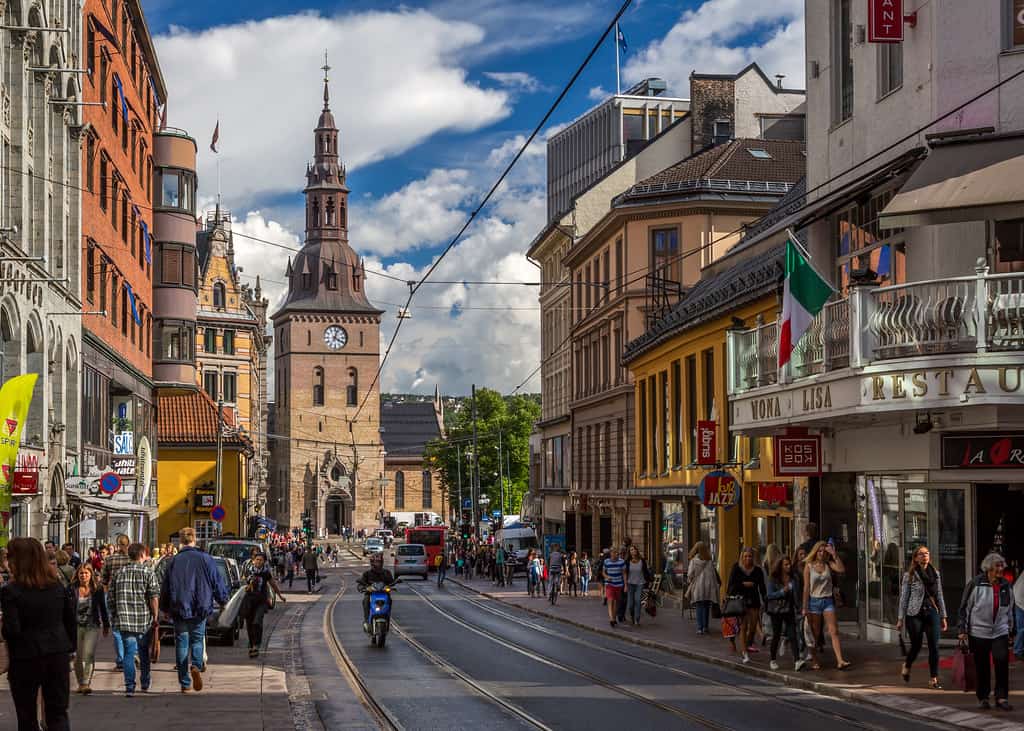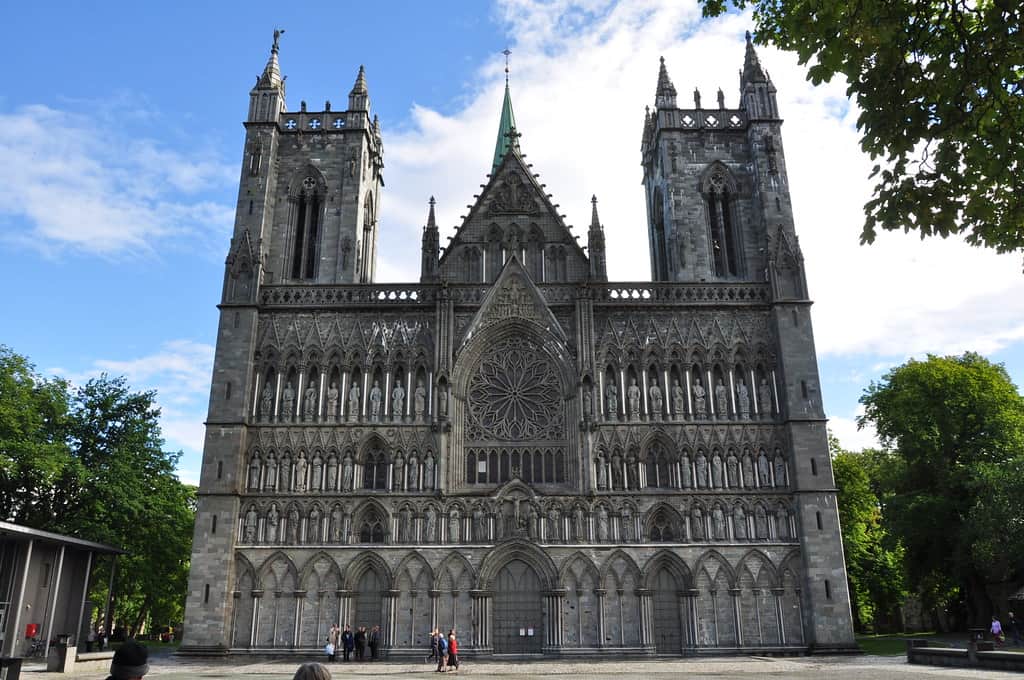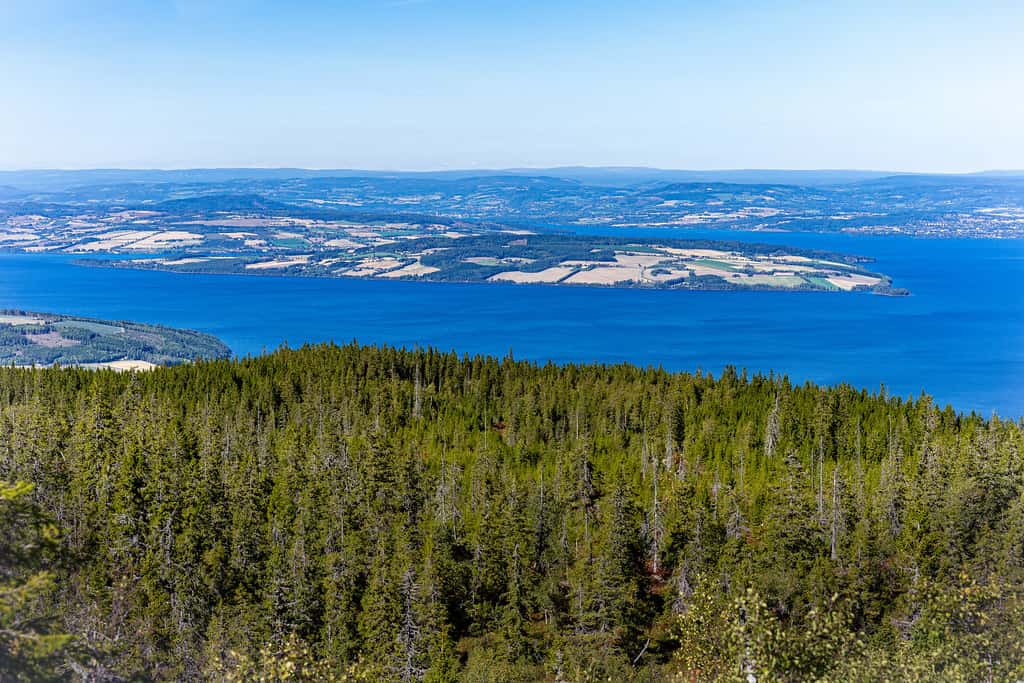
The tradition of pilgrimage to sacred places is not exclusive to any one region or religion. In Europe, two of the most prominent pilgrimage routes are the Saint Olav Way in Norway and the Camino de Santiago. Both have a historical and spiritual background that has attracted millions of pilgrims over the centuries.
In this article, we will explore the characteristics of the Saint Olav Way and how it compares to the more famous routes of the Camino de Santiago.
Índice de contenidos
- 1 The Saint Olav Way: history and spirituality
- 2 Camino de Santiago Routes: A Historic Network of Pilgrimage
- 3 Similarities and Differences: Historical Pilgrimage in Europe
- 4 Comparison with Camino de Santiago Routes
- 5 The Historical Connection Between the Saint Olav Way and Spain
- 6 Preparation for the Saint Olav Way
- 7 Highlights of the Saint Olav Way
The Saint Olav Way: history and spirituality

The Saint Olav Way is named after Olav II Haraldsson, King of Norway in the 11th century. Olav was a key figure in the Christianisation of Norway, and after his death in the Battle of Stiklestad in 1030, he was canonised. His tomb, located in the Nidaros Cathedral in Trondheim, quickly became a place of pilgrimage.
This medieval route, restored in the 1990s, remains today a destination that combines spirituality, history, and nature.
Although less travelled than the Camino de Santiago, this journey offers a unique experience of introspection and connection with nature.
Key Facts about the Saint Olav Way
For those interested in undertaking the Saint Olav Way, here are some essential details for planning the pilgrimage:
- Main Length: the most well-known route, from Oslo to Trondheim, is approximately 650 kilometres long.
- Approximate Duration: it takes between 4 and 6 weeks to complete, depending on the pilgrim’s pace.
- Difficulty Level: moderate to high, due to the mountainous terrain and the need to carefully plan the stages.
- Accommodation Available: from hostels and guesthouses to small farms that welcome pilgrims.
Camino de Santiago Routes: A Historic Network of Pilgrimage
Unlike the Saint Olav Way, the Camino de Santiago is a much larger network of routes. Some of the most notable include:
- French Way: this is the most popular and heavily-travelled route of the Camino de Santiago. It begins in Saint-Jean-Pied-de-Port, France, and stretches over 800 kilometres to Santiago de Compostela.
- Primitive Way: considered the oldest route, it connects Oviedo to Santiago. Known for its difficulty, it also offers stunning mountainous landscapes.
- English Way: chosen by pilgrims arriving by sea from England and Ireland, this route is shorter and quieter, ideal for those seeking a more intimate experience. You can find more information in this guide to the English Way.
- Way to Finisterre: an extension of the Camino de Santiago that takes pilgrims to Cape Finisterre, known as the “end of the world” in ancient times.
Similarities and Differences: Historical Pilgrimage in Europe
Both routes, while different in their geography and development, share some common points. Both the Saint Olav Way and the Camino de Santiago are routes of historic pilgrimage, used since the Middle Ages to reach places of great spiritual significance. However, there are notable differences in their infrastructure, landscapes, and services.
Infrastructure and Services
The Camino de Santiago, especially the French Way from O Cebreiro, boasts a highly developed infrastructure. Pilgrims have access to hotels, hostels, albergues, restaurants, and excellent signage.
On the other hand, the Saint Olav Way, although growing, has more limited services. This means pilgrims must plan their stages more carefully, as the distances between accommodation points may be greater.
Landscapes and Nature
The environment of the Saint Olav Way is dominated by Scandinavian nature: mountains, dense forests, and views of the fjords. It is ideal for those seeking tranquillity and a direct connection with the natural surroundings. In contrast, the Camino de Santiago offers a great diversity of landscapes, from the arid fields of Castile to the green forests of Galicia.
Comparison with Camino de Santiago Routes
The Saint Olav Way, although lesser-known, invites reflection on its similarities and contrasts with the traditional Camino de Santiago routes. These comparisons include not only the previously mentioned differences in infrastructure and landscapes but also the experiences that each pilgrim may encounter.
For example, the Primitive Way routes and the Saint Olav Way share a higher physical demand, making them challenging options for more experienced walkers. Likewise, both the route to Finisterre and the main Saint Olav route end at points that symbolise not just a physical destination, but also a spiritual closure for the pilgrims.
The Historical Connection Between the Saint Olav Way and Spain
Although the Saint Olav Way is centred in Norway, it also has a special connection to Spain.
The figure of Saint Olav is celebrated in several locations across Spain, such as in Burgos, where a route begins that leads to the San Olav Chapel in Covarrubias. This route, shorter than the English Way (more details of the English Way from Ferrol), reflects the historical ties between both cultures.
Furthermore, the cultural exchange between Spain and Norway has deep roots. One example is the story of Princess Kristina of Norway, who in the 13th century travelled to Castile to marry Prince Felipe. This historical bond is remembered at the San Olav Chapel, a symbol of the connection between these two countries.
Preparation for the Saint Olav Way
Taking the Saint Olav Way requires special preparation. Unlike the routes of the Camino de Santiago, where infrastructure makes the journey easier, in Norway it is crucial to plan carefully. The best times to undertake this route are the summer months, particularly July and August, when temperatures are milder and services are fully operational.
Highlights of the Saint Olav Way

Along the Saint Olav Way, pilgrims can discover various points of cultural, historical, and natural interest. Here are some of the most emblematic:
- The Nidaros Cathedral in Trondheim. It is the final destination of the Saint Olav Way and one of the most impressive Gothic buildings in Scandinavia. Built in honour of Saint Olav, it is an important pilgrimage site and an architectural gem not to be missed.
- The historic Stiklestad farm. This site is famous for being the location where Saint Olav fell in battle in 1030. Today, it is a cultural centre that hosts historical events and has a church built in his memory.
- The Mjøsa Lake and its surroundings. On the stretch from Oslo, the route passes along Norway’s largest lake. This area offers spectacular views, picturesque villages, and an opportunity to connect with nature.
- The Dovrefjell mountains. This mountain pass is one of the most challenging segments, but also one of the most beautiful. Here, pilgrims can enjoy breathtaking landscapes and possibly spot wild reindeer.
The Saint Olav Way and the Camino de Santiago are more than just routes; they are transformative journeys that connect people with their spirituality, history, and nature. While the various pilgrimage routes to Santiago offer a varied and accessible experience, the Saint Olav Way stands out for its uniqueness and its connection to Scandinavian landscapes and history.
Regardless of which one is chosen, both routes represent an invaluable legacy of pilgrimage in Europe.









